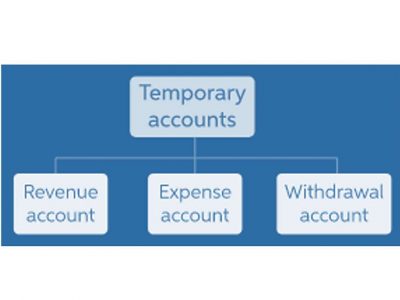Liabilities in Accounting: Understanding Key Concepts and Applications

The classified balance sheet uses sub-categories or classifications to further break down asset, liability, and equity categories. For example, in the balance sheet above, equipment and fixtures are listed together under assets in the amount of $17,200. On the classified balance sheet below, equipment and furniture are listed separately under a fixed asset category instead of just what accounts are liabilities being listed as assets. This formula is used to create financial statements, including the balance sheet, that can be used to find the economic value and net worth of a company. Current liabilities are important because they can be used to determine how well a company is performing by whether or not they can afford to pay their current liabilities with the revenue generated.
But not all liabilities are expenses—liabilities like bank loans and mortgages can finance asset purchases, which are not business expenses. When a company deposits cash with a bank, the bank records a liability on its balance sheet, representing the obligation to repay the depositor, usually on demand. Simultaneously, in accordance with the double-entry principle, the bank records the cash, itself, as an asset. The company, on the other hand, upon depositing the cash with the bank, records a decrease in its cash and a corresponding increase in its bank deposits (an asset). Additionally, maintaining accurate cash flow projections is essential for anticipating future financial needs.
Total Liabilities: Definition, Types, and How To Calculate
Liabilities, on the other hand, represent obligations a company has to other parties. Financial statements, such as the balance sheet, represent a snapshot of a company’s assets, liabilities, and equity at a specific point in time. Assets and liabilities are treated differently in that assets have a normal debit balance, while liabilities have a normal credit balance.

Check your financial health score to get a more detailed look at your spending and saving habits and find out how you can improve. If managing your liabilities seems overwhelming, consider working with a credit counseling agency to create a debt relief plan. No matter how much debt you have or what kind, make sure you have a plan in place to pay it down — the sooner, the better. Typically, the more time you have to build up your assets, the less weight your liabilities will carry. “Where people start getting into a lot of trouble is they start buying things on debt assuming they’re going to have money left for their other goals, and it never ends up working that way,” Swanburg says. For example, they can highlight your financial missteps and restrict your ability to build up assets.
Want More Helpful Articles About Running a Business?
Any amount remaining (or exceeding) is added to (deducted from) retained earnings. This line item includes all of the company’s intangible fixed assets, which may or may not be identifiable. Identifiable intangible assets include patents, licenses, and secret formulas. Property, Plant, and Equipment (also known as PP&E) capture the company’s tangible fixed assets. Some companies will class out their PP&E by the different types of assets, such as Land, Building, and various types of Equipment. Liabilities are presented as line items, subtotaled, and totaled on the balance sheet.
The most common accounting standards are the International Financial Reporting Standards (IFRS). However, many countries also follow their own reporting standards, such as the GAAP in the U.S. or the Russian Accounting Principles (RAP) in Russia. Although the recognition and reporting of the liabilities comply with different accounting standards, the main principles are close to the IFRS. Some loans are acquired to purchase new assets, like tools or vehicles that help a small business operate and grow.
Cost Of Goods Sold (COGS)
If splitting your payment into 2 transactions, a minimum payment of $350 is required for the first transaction. A balance sheet must always balance; therefore, this equation should always be true. We’re firm believers in the Golden Rule, which is why editorial opinions are ours alone and have not been previously reviewed, approved, or endorsed by included advertisers. The Ascent, a Motley Fool service, does not cover all offers on the market. Unearned revenue is money that has been received by a customer in advance of goods and services delivered.

